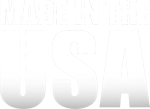Comparatively low barriers to entry and high-profit potential are great incentives to start operating a mobile laser tag business.
LaserBlast had a great time at IAAPA this year: we got to reconnect with old friends and partners and make a few new ones along the way. Perhaps it was a coincidence of placement within the convention center, but nearly a quarter of our scanned visitors were thinking about adding laser tag to their existing set of mobile offerings or jumping into the industry with a mobile laser tag system.
It’s not hard to see why there would be a lot of interest in running a mobile laser tag operation: lower barriers to entry, high return on investment, and flexibility.
While the same CyberBlast Pro system that goes into an elaborately themed arena can also be used by mobile operators, there are stark differences when it comes to running a mobile laser tag operation. Over the next month, we’ll take a look at some of these differences and explore unique opportunities and challenges faced by mobile operators.
Startup Costs and Considerations
Whether it is a standalone business or part of a larger entertainment center, your typical laser tag arena runs 20-24 vests in a 3-4000 square foot space. An arena of this size ideally has around 100,000 people within a 30-minute commute. The laser tag system, along with install, costs around $50,000 and up, and this is before the costs of theming, building construction, municipal compliance, property tax, and other costs are factored in. Of course, given all these costs, with proper operation and management, the return on investment could occur within one or two years.
Typically, a mobile operator will start with 8-10 phasers, with a hardware cost in the ballpark of $10,000 and upwards (depending on how many phasers they want in their system). Assuming they already have a vehicle to transport the gear to their client’s location, any additional costs would generally be for elements that are used in the place of theming: barriers, lights, effects, etc.
A mobile operator enjoys the flexibility of being able to reach a client base as far as they are willing to drive. Given there are no “walk-ins,” the mobile operator doesn’t have to be tied down to a fixed location during fixed hours. Here’s the thing: if you do not advertise, you will get no business.
Throughput and Retention
One of the factors that makes laser tag so appealing to entertainment center operators is the throughput of a laser tag arena. Compared to other attractions like VR, arcades, or bowling lanes, a laser tag arena brings in more money per square foot per week. The reason for this is because you can have more people using the space for a shorter duration of time, more times in a single hour, with fewer employees overseeing it (typically 1). While repeat business is desirable for all operators, the nature of a brick-and-mortar business means that it represents a smaller proportion of their revenue.
Because mobile laser tag operators largely run on an appointment-only basis, throughput is not a financial consideration as much as it is a practical one (such as ensuring everyone in a group or party gets a chance to play). For a mobile operator, repeat business is your lifeblood. This means that the delivered experience, and the feedback the event organizers get from the players, will determine whether you’ll get a call back next year, or acquire references through word-of-mouth endorsements.
In a future article, we will explore ways for mobile operators to identify their target client base, how to reach them, and how to develop sustained repeat business.



